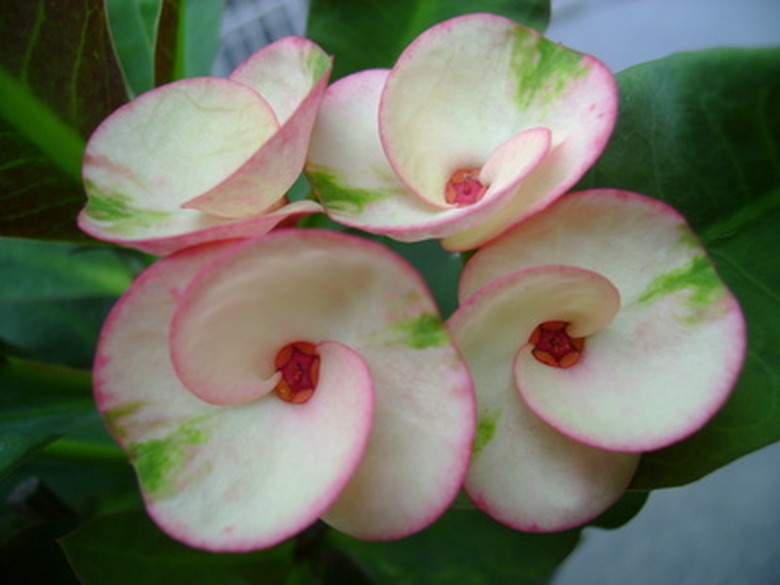Crown Of Thorns Plant Care
Crown of thorns is a common name for the plant species Euphorbia milii and also to similar-looking hybrids that may or may not have this species in their lineage, such as Euphorbia x lomi. Milky sap runs in the stiff, spiny stems of these plants that grow as arid house plants or outdoors in USDA zones 9 and warmer. Excessive drought or chill leads to partial drop of leaves.
Light Exposure
Provide as much direct sunlight to crown of thorns as possible. A minimum of eight hours of sunlight daily year-round ensures plants grow strong and with adequate foliage. Sunlight also promotes abundant flowering. In hot summer climates or low desert regions, partial shade in the heat of the afternoon serves these succulent shrubs well.
- Crown of thorns is a common name for the plant species Euphorbia milii and also to similar-looking hybrids that may or may not have this species in their lineage, such as Euphorbia x lomi.
- A minimum of eight hours of sunlight daily year-round ensures plants grow strong and with adequate foliage.
Soils
Tolerant of acidic and alkaline soil types, the key to crown of thorns' success remains a fast-draining soil with some fertility. A sandy soil with incorporated compost is ideal, but a loam works well if texture and looseness are increased by adding grit and some organic matter. For house plants, use a gritty cactus soil potting mix.
Watering Regimen
Contrary to the belief that succulents do not need water, crown of thorns grows lush and quickly in summer's high heat when the fast-draining soils remain moist, never soggy. Provide 1 inch of water every one to three days when temperatures regularly remain above 80 degrees F. From fall to spring, allow the soil to become dry between watering—every two to three weeks, add no more than 1 inch of water each time. If winter temperatures remain below 50 degrees, provide even less water.
Apply granular, slow-release fertilizer only in spring and summer. Alternatively, incorporate a water-soluble fertilizer into a regular spring or summer watering every month according to product label directions.
- Tolerant of acidic and alkaline soil types, the key to crown of thorns' success remains a fast-draining soil with some fertility.
- Provide 1 inch of water every one to three days when temperatures regularly remain above 80 degrees F. From fall to spring, allow the soil to become dry between watering—every two to three weeks, add no more than 1 inch of water each time.
Pruning
Prune plants with sharp hand pruners, making cuts at the desired height on the stem and allow the sap to bleed and dry. Conduct pruning in early spring before new growth begins and avoid pruning during high humidity or rainy times of the growing season.
Propagation
Immediately after cutting stems, place them in shallow water, about 1 to 2 inches deep. Submerge only the cut stem base wounds and leave them for about one hour. Pull from the water and allow them to dry in a warm, well-aerated spot for about a week. The cutting wounds will be clean but hard with a callous. Sink the cuttings 1 to 2 inches deep in warm, moist sand and place in very bright indirect light. Keep soil barely moist; after one to three months, roots will grow from the cutting bases.
- Prune plants with sharp hand pruners, making cuts at the desired height on the stem and allow the sap to bleed and dry.
Hazards
With heavily thorned stems, wear gloves when working around crown of thorns plants. Also know that the milky sap that oozes from pruning cuts or broken leaves irritates the skin, potentially causing a rash. Do not allow the sap to get into skin wounds or eyes and eat no parts of the plant.
References
- Floridata: Euphorbia Milii
- "Tropical Flowering Plants;" Kirsten Albrecht Llamas; 2003
